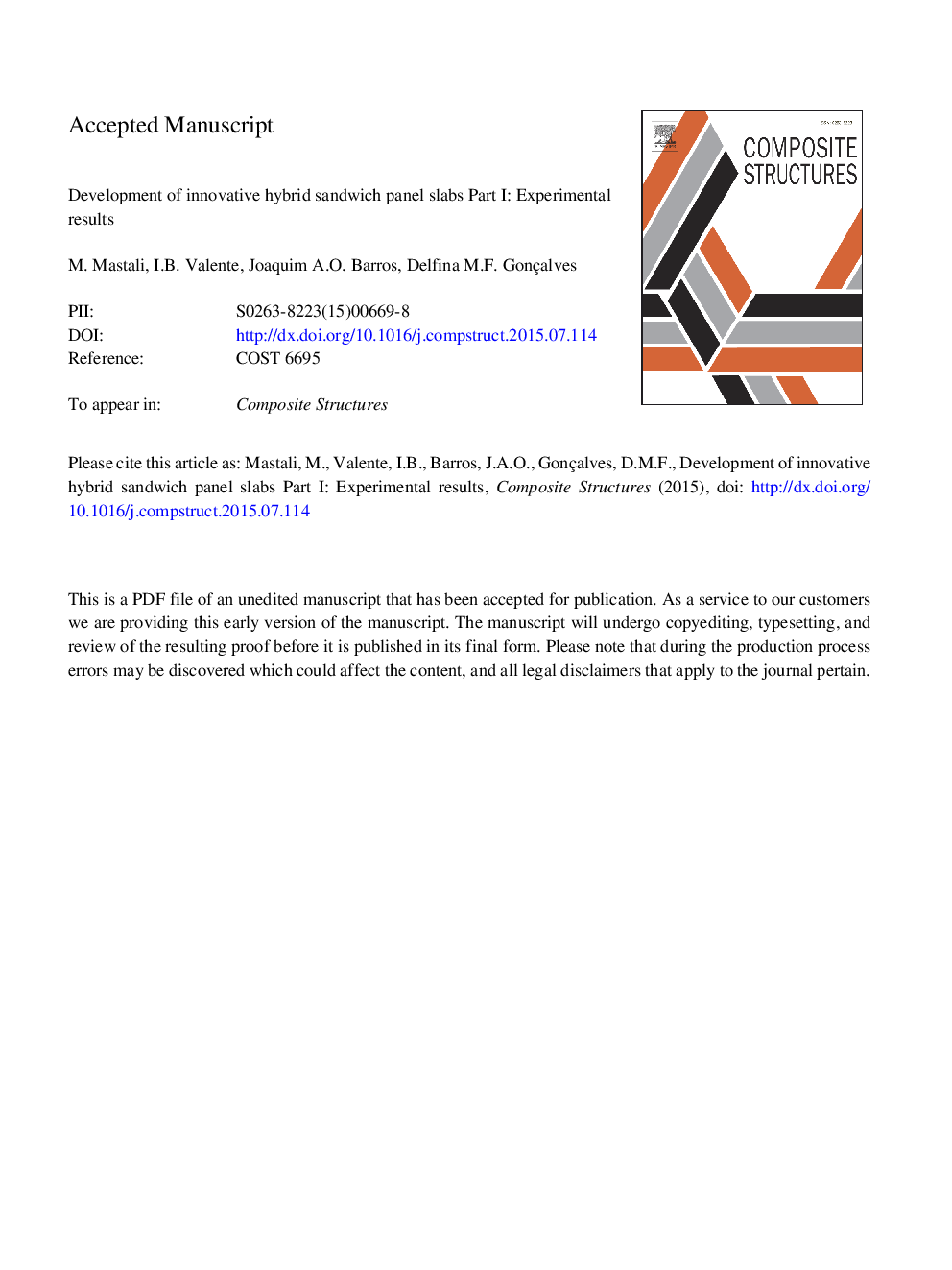| Article ID | Journal | Published Year | Pages | File Type |
|---|---|---|---|---|
| 6706520 | Composite Structures | 2015 | 58 Pages |
Abstract
In this paper, a new generation of composite sandwich slab is proposed as a solution for the rehabilitation of slabs in old masonry buildings. An innovative solution was developed during this research formed by four components: a Deflection Hardening Cement Composite (DHCC) layer on the top compression skin, a glass fiber reinforced polymer (GFRP) skin at the bottom tension surface, GFRP ribs to transfer shear from top to bottom layers, and foam core for thermal-insolation purposes. The DHCC layer contributes significantly for the load carrying and deflection capacity due to its stiffness, compressive strength and toughness, offers resistance to the occurrence of buckling phenomena in the GFRP ribs, improves the performance of this structural concept against impact and fire, and constitutes an excellent medium for the application of finishing materials, like ceramics or timber. Two different hybrid composite slabs were developed and tested, and their behavior was assessed under flexural loading. The results showed that the developed hybrid sandwich slabs accomplish all design requisites for serviceability and ultimate limit states, and assure a stiffness/dead-weight and load-capacity/dead-weight ratios much higher than conventional structural slab systems.
Keywords
Related Topics
Physical Sciences and Engineering
Engineering
Civil and Structural Engineering
Authors
M. Mastali, I.B. Valente, Joaquim A.O. Barros, Delfina M.F. Gonçalves,
